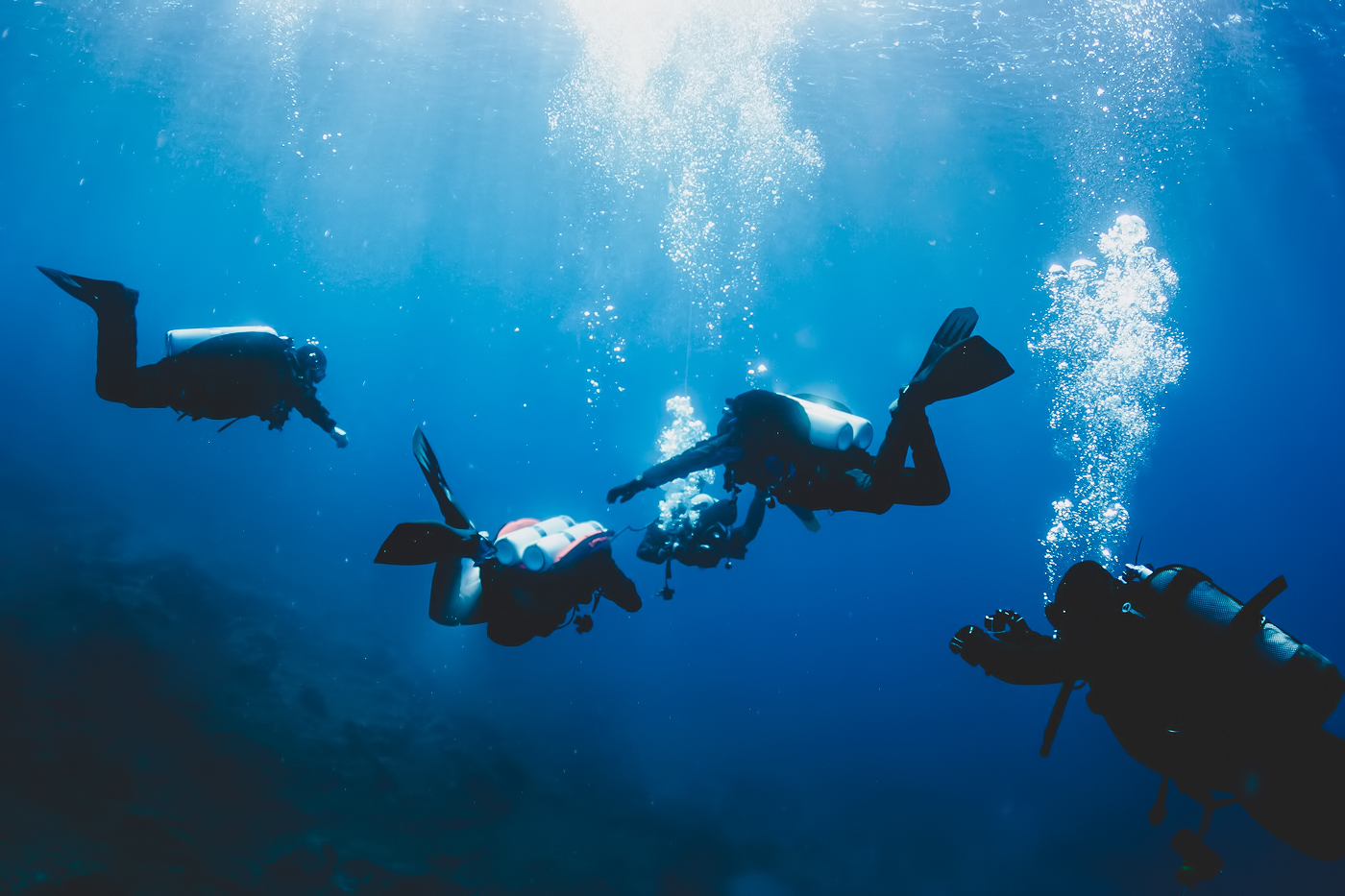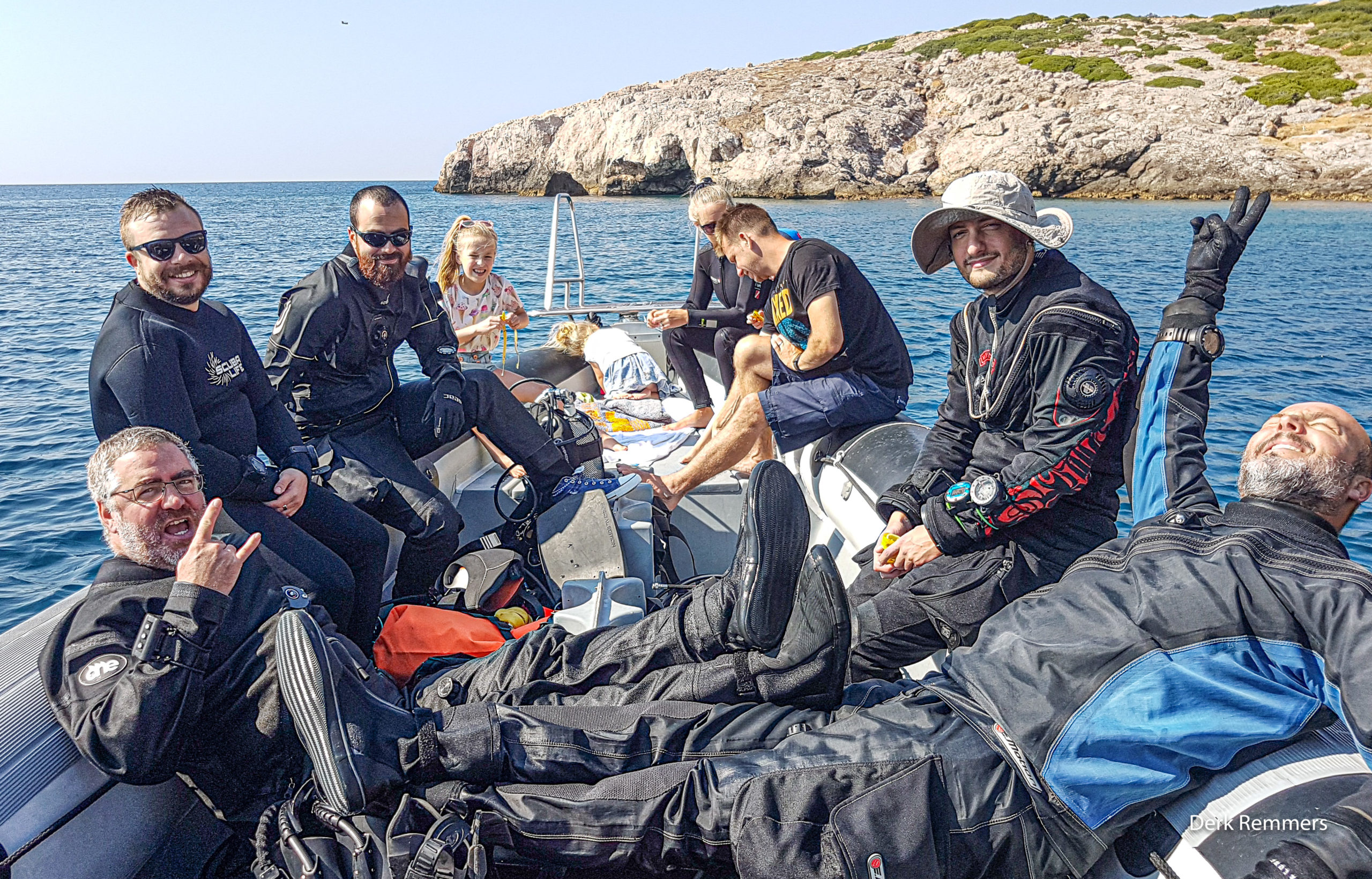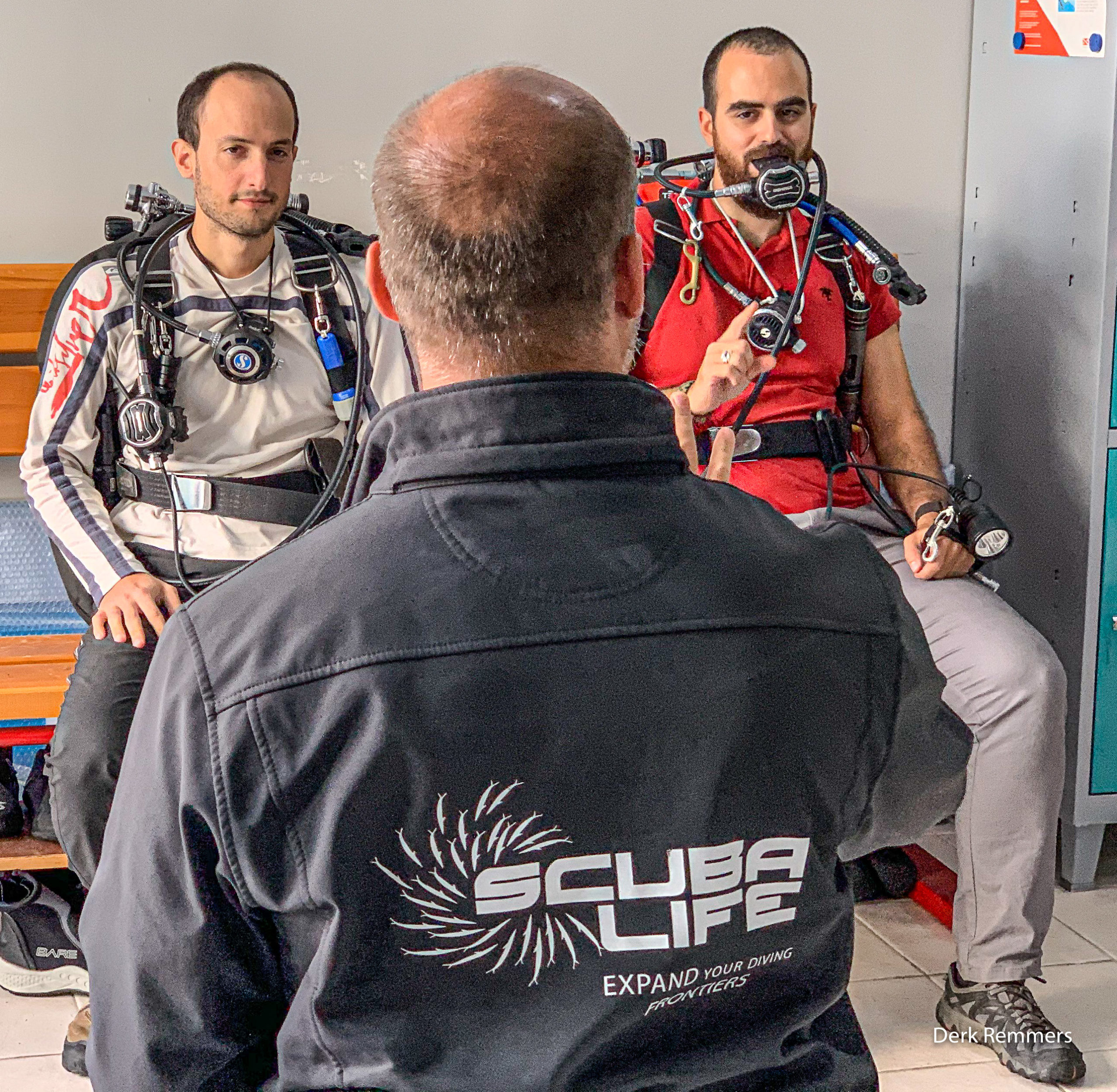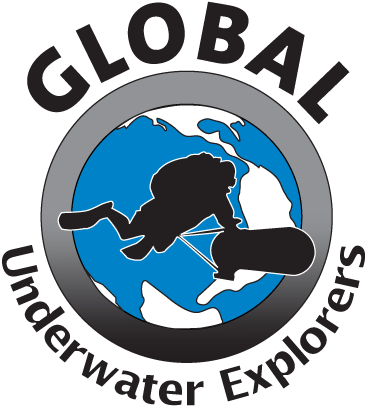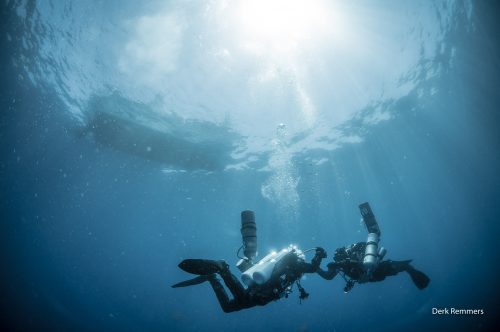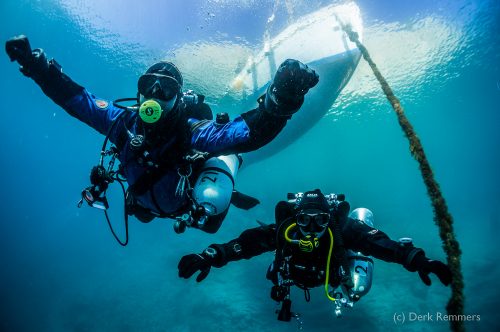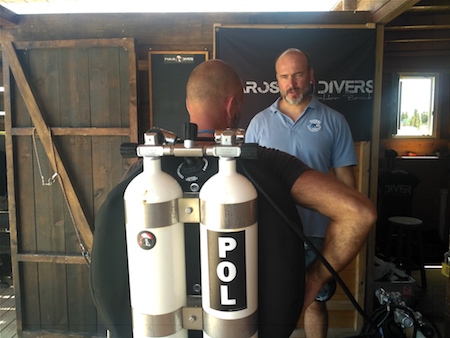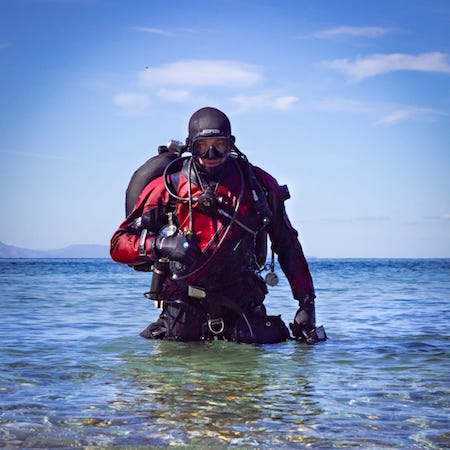6 days
10 confined water dives / 6 open water dives
21 meters / no deco
Air or EAN32
Applicants for a Recreational Diver Level 1 course must:
- Be physically and mentally fit.
- Be included in an insurance program that specifically covers diving emergencies.
- Be a nonsmoker.
- Obtain a physician’s prior written authorization for the use of prescription drugs, except for birth control, or for any medical condition that may pose a risk while diving.
- Be a minimum of 14 years of age. Documented parental or legal guardian consent must be submitted to GUE HQ when the participant is a minor.
- Be certified, at minimum, as an autonomous entry-level scuba diver (or equivalent) from a recognized training agency.
- Submit a completed Course Registration Form, Medical History Form, and Liability Release Form to GUE HQ.
- The Recreational Diver Level 1 course is normally conducted over five days. It requires a minimum of ten confined water sessions, six open water dives, and at least forty hours of instruction, encompassing classroom lectures, land drills, and in-water work.
- Part 1: 3-4 full days; 4 confined open water dive and 2 open water dives and lectures
- Part 2: 3-4 full days; 6 confined open water dive and 4 open water dives and lectures
- Instructor fee
- 6 academic modules
- 6 open water dives
- Transportation from dive centre to dive sites
- Single or Double 12L tank rentals
- All gas fills (EAN32)
- Weights (Belt or V-weight)
- Use of all dive centre amenities
Not included:
- Course registration fees of $95 USD paid online at GUE HQ.
- Introduction: GUE organization and course overview (objectives, limits, training requirements)
- Diving physics supporting knowledge and ability to safely manage:
1.Breathing underwater
2.Equalization and avoidance of barotraumas including DCI
3.Buoyancy, trim, and balance; ascending, descending, and underwater propulsion
- Physical and mental stress while diving
- Scuba diving equipment overview and operation
- Breathing gas dynamics
- Decompression theory, including decompression sickness (DCS, AGE)
- Planning, including gas management, dive preparation, and pre-dive evaluation
- Nitrox diving and importance of gas analysis
- Team diving and underwater communication
- Environmental considerations while diving
- Conservation-minded diving techniques
Land Drills
- Equipment fit, assembly and disassembly
- Propulsion and maneuvering techniques
- Gas analysis
- GUE EDGE and pre-dive checks
- Basic 5 scuba skills
- SPG check
- S-drill
- Valve operation
- Connect and disconnect LP inflation hose from BC (and drysuit, if used)
- Oral inflation of BC
- SMB deployment utilizing a spool
- Basic compass navigation
- Basic 5 rescue skills
- Certification Requirements
Must be
- Able to swim at least 275 m in less than 14 minutes without stopping.
- Must be able to swim a distance of at least 15 m on a breath hold while submerged.
- Certification is awarded after completion of course and a pass mark of 90% or more is achieved.
- If a passing mark isn’t achieved the first time round, students may retake the exam.
- Maximum training depth 21 metres
- No overhead diving
- Minimum decompression limits (MDLs)
- Student-to-instructor ratio cannot exceed 3:1
- A 50% deposit is required upon confirmation of enrolment, the remaining balance is due before the start of the class.

